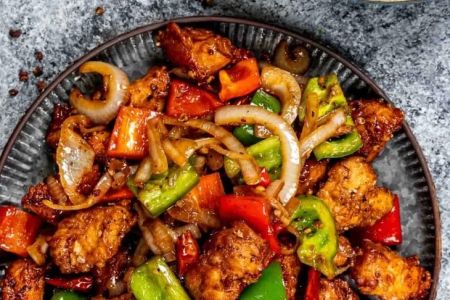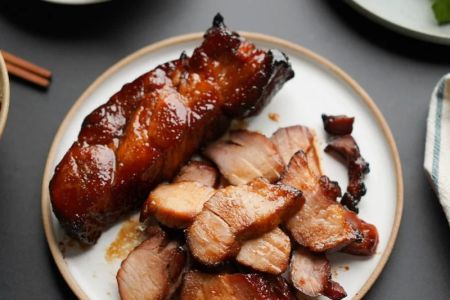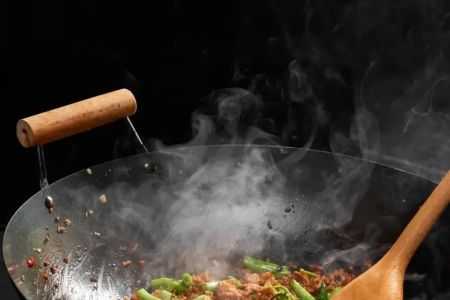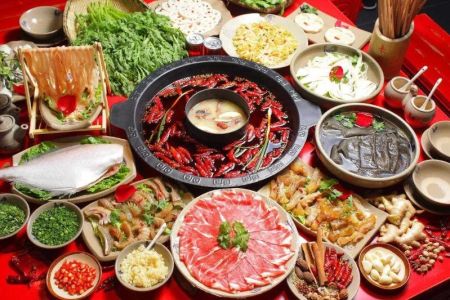Traditional Chinese Food in the US: A Culinary Journey from Ancient Flavors to Modern Innovation
- Introduction to Traditional Chinese Food
- Evolution of Traditional Chinese Food in the US
- Authenticity vs. Adaptation in Chinese Cuisine
- Regional Variations of Chinese Food
- Popular Traditional Chinese Dishes in the US
- Chinese Food and Healthy Living
- Where to Buy Authentic Chinese Ingredients and Products
Introduction to Traditional Chinese Food
Traditional Chinese food has been an integral part of the cultural landscape for centuries, offering a rich variety of flavors and cooking techniques that have been perfected over millennia. As Chinese immigrants began settling in the US, they brought with them their culinary heritage, transforming the food culture across the nation. Chinese food in the US is not only about noodles, rice, and stir-fries; it is a fusion of ancient traditions and local preferences, creating a unique dining experience.
The Evolution of Traditional Chinese Food in the US
The journey of Chinese food in the US began in the 19th century when Chinese immigrants came to California to work on the railroad. They introduced dishes like chop suey, which quickly became a popular Americanized version of Chinese food. Over time, as Chinese communities grew, more authentic Chinese restaurants began to appear, offering regional specialties from all parts of China, including Cantonese, Sichuan, and Hunan cuisines. However, the American market still favored a heavily modified version of Chinese food, one that would cater to local tastes and ingredients.
Today, Chinese food in the US has evolved to become an essential part of the American dining scene, with regional variations found in virtually every city. From casual takeout to high-end dining, the accessibility of Chinese food has only increased over the years, allowing it to maintain its popularity in the US.
Authenticity vs. Adaptation in Chinese Cuisine
The debate over authenticity versus adaptation has been ongoing for years. Many American-born Chinese restaurants offer a “fusion” of traditional Chinese techniques and ingredients with American flavors. Dishes like General Tso’s Chicken, fortune cookies, and egg rolls are staples of the Americanized Chinese menu. While they have no direct equivalent in China, they have become beloved across the US.
On the other hand, those seeking a more authentic experience can find restaurants that stick closely to traditional Chinese recipes. These establishments focus on preserving the integrity of the dishes, often sourcing ingredients directly from China and ensuring their chefs follow regional cooking methods to maintain the authentic flavors. The choice between the two largely depends on what diners are looking for — comfort and familiarity or a truly traditional taste.
Regional Variations of Chinese Food
China’s vast size means that its cuisine is incredibly diverse, and different regions of China have distinct flavors and cooking methods. Some of the most popular regional styles in the US include:
- Cantonese Cuisine: Known for its mild and slightly sweet flavors, Cantonese food emphasizes fresh ingredients and delicate seasoning. Dishes like dim sum and Peking duck are the quintessential representations of Cantonese cuisine.
- Sichuan Cuisine: Famous for its bold, spicy flavors, Sichuan food incorporates ingredients like chili peppers and the numbing heat of Sichuan peppercorns. Popular dishes include mapo tofu and kung pao chicken.
- Hunan Cuisine: Similar to Sichuan in terms of heat, Hunan cuisine adds a bit more tanginess and is known for its use of fresh chilies and garlic. Dishes like spicy chicken and steamed fish are common.
- Shandong Cuisine: With its roots in northern China, Shandong food focuses on fresh seafood and hearty meats. The cuisine is known for its reliance on simple yet flavorful broths.
These regional distinctions are evident in the US, where certain cities have become hotspots for specific Chinese food styles. For example, New York and San Francisco are known for their Cantonese offerings, while Los Angeles is home to a wide variety of Sichuan and Hunan restaurants.
Popular Traditional Chinese Dishes in the US
While the menu at Chinese restaurants in the US may vary depending on the region, there are several dishes that have become staples. Some of these dishes, like the famous egg roll or sweet and sour chicken, are a blend of American tastes with Chinese culinary techniques. Others, like dumplings, fried rice, and hot and sour soup, maintain closer ties to their traditional roots.
Popular dishes often include:
- Sweet and Sour Chicken: A dish that has been adapted to suit American tastes, often featuring crispy battered chicken pieces coated in a tangy sauce made from vinegar, sugar, and ketchup.
- Kung Pao Chicken: A stir-fried dish with chicken, peanuts, vegetables, and chili peppers, this dish has become a favorite in Chinese restaurants across the US.
- Dim Sum: Bite-sized dishes that are typically served as snacks or appetizers, dim sum includes dumplings, buns, and other delicacies, traditionally eaten for brunch in China.
These dishes have not only been embraced by the American palate but also adapted to suit regional preferences, making them ever-evolving in their own right.
Chinese Food and Healthy Living
As more people become conscious of healthy eating, Chinese food has gained popularity for its balance of fresh vegetables, lean meats, and flavorful seasonings. Traditional Chinese cuisine often emphasizes moderation and variety, which can be beneficial for those seeking a more balanced diet. Many dishes are low in fat, rely on steaming or stir-frying rather than deep-frying, and incorporate healthful ingredients like ginger, garlic, and soy sauce.
Moreover, in recent years, there has been a shift towards organic and sustainable ingredients in the Chinese food scene in the US. More restaurants are offering gluten-free and vegan options, allowing people with dietary restrictions to enjoy a more authentic and healthy Chinese meal.
Where to Buy Authentic Chinese Ingredients and Products
If you’re eager to replicate authentic Chinese dishes at home, there are plenty of places to buy traditional Chinese ingredients. Many online stores, such as GoChinaRose, offer a wide range of high-quality Chinese spices, sauces, and ingredients, allowing you to recreate your favorite Chinese meals with ease. Whether you’re looking for soy sauce, Chinese five-spice powder, or authentic Sichuan peppercorns, these stores have it all.
For those who prefer shopping in person, specialty Asian markets in major cities across the US are the best places to find fresh produce, meats, and dry goods imported from China.






![Top Chinese Restaurants for Authentic Cantonese Cuisine in [Your City]](https://img.gochinarose.com/d33/2507/4157910400_450x300.webp)
